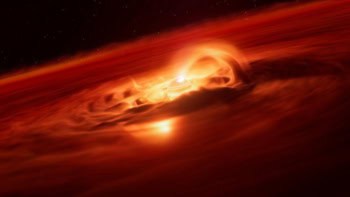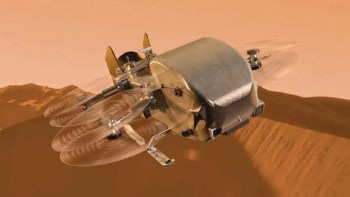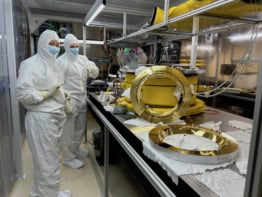An international team of researchers is claiming that deuterium – a heavy form of hydrogen created moments after the Big Bang – is far more abundant than previously estimated. Using new data from NASA's FUSE satellite, they say that some of the deuterium has gone unnoticed in the past because it binds as a solid to interstellar dust grains, making it difficult to see. The claim, if true, could force astronomers to rethink current models of how stars and galaxies form and evolve (Astrophysical J. 647, 1106).

Deuterium — an isotope of hydrogen containing a proton plus a neutron — is cosmologically significant because it is continually destroyed in star cores by the same nuclear reactions that create helium and other heavier elements. The amount of deuterium is therefore far lower now than it was in the early universe. Indeed, the shortfall in the amount of deuterium allows scientists to track our galaxy’s chemical evolution over billions of years.
But what has mystified astronomers over the years is the fact that while primordial concentrations are about 27 parts deuterium per million hydrogen atoms (ppm), values in the Milky Way today range from 5-22 ppm. Three years ago, Bruce Draine from Princeton University developed a model that could explain this anomaly. He said that deuterium, compared to hydrogen, might preferentially bind to interstellar dust grains, changing from an easily detectable gas to an unobservable solid form.
That theory is now strongly supported by the new data from NASA’s Far Ultraviolet Spectroscopic Explorer (FUSE) satellite, which can monitor the ultraviolet fingerprints of gaseous deuterium. The data, collected over the past six years, show that areas with large amounts of interstellar dust have low abundances of gaseous deuterium, while areas with little interstellar dust have high concentrations.
But surprisingly, the FUSE team has found present-day deuterium abundances are less than 15% below primordial concentrations — much larger than current assumptions based on theory that at least one-third was destroyed over time. This implies two possibilities: either significantly less material has been converted to helium and heavier elements in stars; or much more primordial gas rained down onto the galaxy over its lifetime than previously thought.
“Our results indicate some essential physical processes have been left out of the models,” says team member Jeffrey Linsky from the JILA lab in Boulder, Colorado. “New models of the galaxy’s chemical evolution need to be computed that can explain the new deuterium abundance.”



